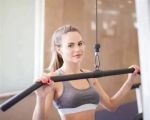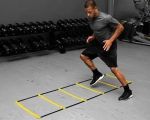How to Choose the Right Gym Equipment for Your Fitness Goals
Whether you're setting up a home gym or updating your gym gear for a better workout, selecting the right equipment is crucial. It can make all the difference in achieving your fitness goals. I’ve been on both sides of the fence: struggling with ineffective equipment and discovering tools that totally transformed my workout routine. Based on my personal experiences and advice from experts, I’ll walk you through the essentials of choosing the right gym equipment for your needs.
1. Understand Your Fitness Goals
The first thing you need to do before buying any gym equipment is clearly define your fitness goals. Are you trying to build muscle? Do you want to lose weight? Or perhaps you just want to improve your overall health? I learned the hard way that blindly buying gym equipment without knowing exactly what you need leads to wasted money and unproductive workouts.
For example, if your goal is muscle building, you’ll want to focus on strength training equipment like free weights, resistance bands, and machines that allow you to perform compound exercises. On the other hand, if your goal is cardiovascular fitness, equipment like treadmills, stationary bikes, and ellipticals are ideal.
2. Assess the Space Available in Your Home or Gym
One of the biggest mistakes people make when selecting gym equipment is not considering the space they have available. When I first started working out at home, I made this mistake. I was so excited to buy a massive treadmill, only to realize it took up half of my living room! Don’t fall into this trap.
Before you invest in equipment, measure the space where you plan to use it. If you’re in a small apartment, you might want to opt for compact, foldable equipment that you can store easily. Adjustable dumbbells and resistance bands are great for tight spaces. Larger equipment like squat racks and multi-gym stations are better suited for spacious areas, whether in a basement or a dedicated home gym room.
3. Quality Matters – Look for Durability and Warranty
We’ve all heard the saying, “You get what you pay for,” and this is especially true when it comes to gym equipment. When I first started out, I made the mistake of buying cheap equipment thinking I was saving money. But after just a few months, that bargain treadmill started making strange noises, and the resistance bands snapped. It was a waste of money in the long run.
Invest in equipment that’s built to last. Quality materials, such as steel frames and durable plastic, ensure that your equipment will withstand heavy use over time. Look for reviews from other users and make sure the brand you’re considering offers a solid warranty. If something goes wrong, you’ll want to know that you can get it repaired or replaced.
4. Don't Forget About Comfort and Adjustability
If you plan on using your equipment regularly, comfort is key. I remember when I first used a stationary bike that wasn’t adjustable. After just a few minutes, my knees started hurting because the seat was too high. It made the entire workout uncomfortable, and I ended up not using it for weeks. That’s when I learned how important adjustability is.
When choosing machines like bikes, treadmills, or ellipticals, check for adjustable features, such as seat height or handlebars, to ensure they fit your body correctly. Comfort features like cushioned seats or ergonomic handles can make a huge difference in your workout experience.
5. Consider Versatility and Multi-Function Equipment
When I built my home gym, I wanted equipment that would allow me to perform a variety of exercises without taking up too much space. That's when I discovered the value of multi-function equipment. For example, a power rack with a pull-up bar, adjustable bench, and space for squats provides versatility, allowing you to perform a variety of strength training exercises without needing separate pieces of equipment.
Multi-functional equipment is not only space-efficient but also cost-effective in the long run. If you're tight on space or budget, invest in equipment that offers more than one function. A resistance band set, for example, can be used for strength training, flexibility exercises, and even rehabilitation work.
6. Choose Equipment That Matches Your Fitness Level
Another important factor to consider when selecting gym equipment is your fitness level. If you’re just starting out, don’t go straight for the most advanced equipment. Start with beginner-friendly tools that will help you build a solid foundation. For example, a simple set of dumbbells or a kettlebell is perfect for those new to strength training. As you progress, you can gradually add more advanced equipment to your routine.
On the flip side, if you’re more experienced and have been working out for a while, you may need more specialized equipment that targets specific muscle groups or allows you to increase the intensity of your workouts. Be sure to choose equipment that matches your current fitness level while challenging you to progress.
7. Set a Realistic Budget
Let’s face it: gym equipment can be expensive. When I started out, I was overwhelmed by the number of options available and the price tags attached to them. However, I quickly learned that spending a fortune on the most expensive gear doesn’t guarantee a better workout. It’s all about finding the right balance between quality and cost.
Set a realistic budget based on the equipment you need and stick to it. Focus on the essentials first, and as you get more into your fitness routine, you can gradually invest in additional equipment. Remember, you don’t need the latest, most expensive equipment to get a great workout.
8. Don’t Overlook Your Safety
Safety should always be a top priority when selecting gym equipment. I’ve seen many people skip over safety features, only to end up injuring themselves. For instance, if you're using weights, ensure that they have secure locking mechanisms to prevent the weights from sliding off during exercises. If you're using machines, check the weight capacity and ensure that the equipment is stable.
Always prioritize safety when choosing gym equipment, whether at home or in the gym. Safety features are essential, not just for comfort but for protecting yourself from injuries.
Choosing the right gym equipment doesn’t have to be overwhelming. By understanding your fitness goals, assessing the space available, considering quality and comfort, and sticking to a realistic budget, you’ll be well on your way to creating a workout routine that works for you. If you’re unsure about which equipment is best for your needs, feel free to check out our recommendations for personalized fitness solutions that can help you achieve your goals more efficiently.








